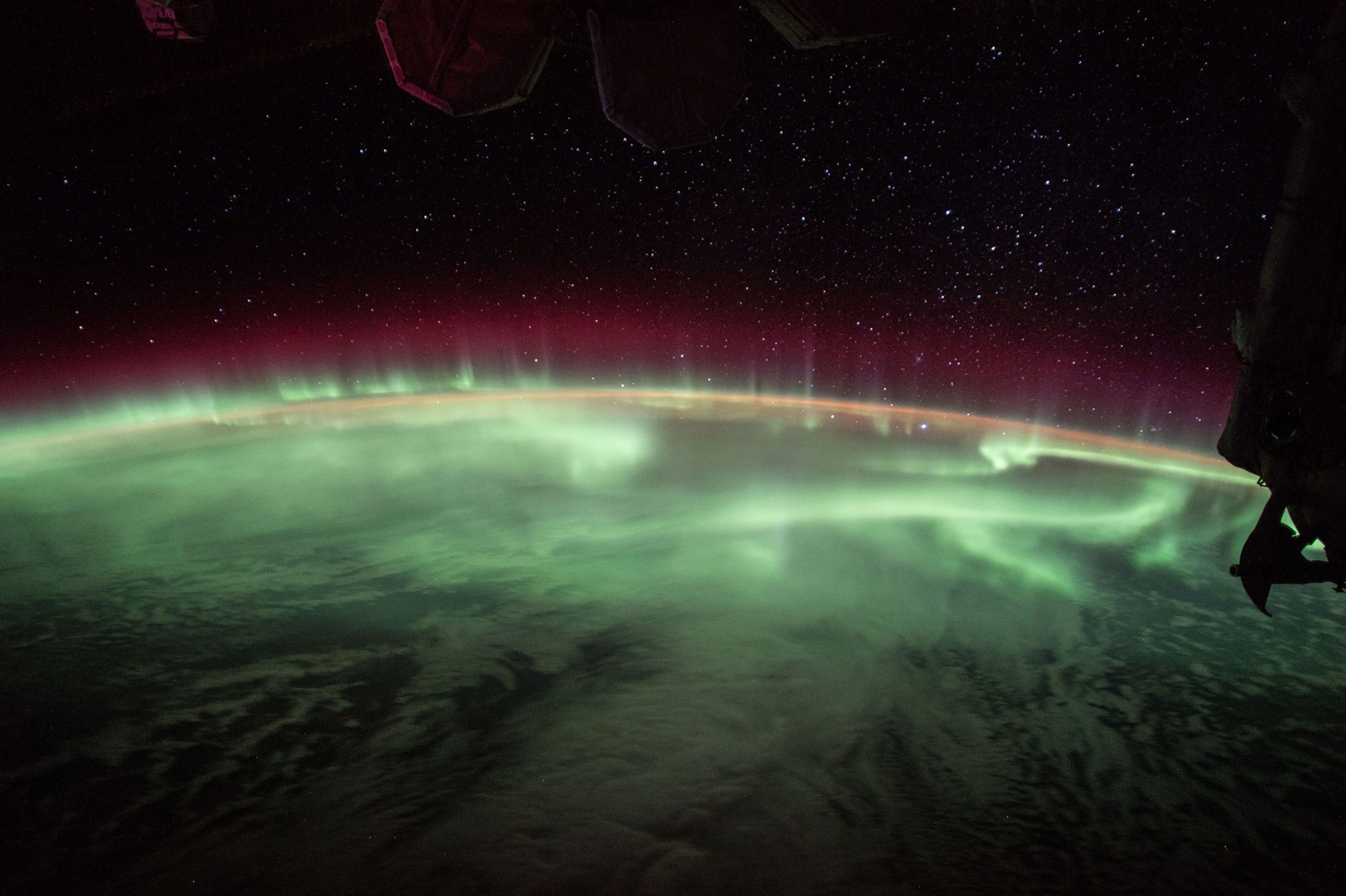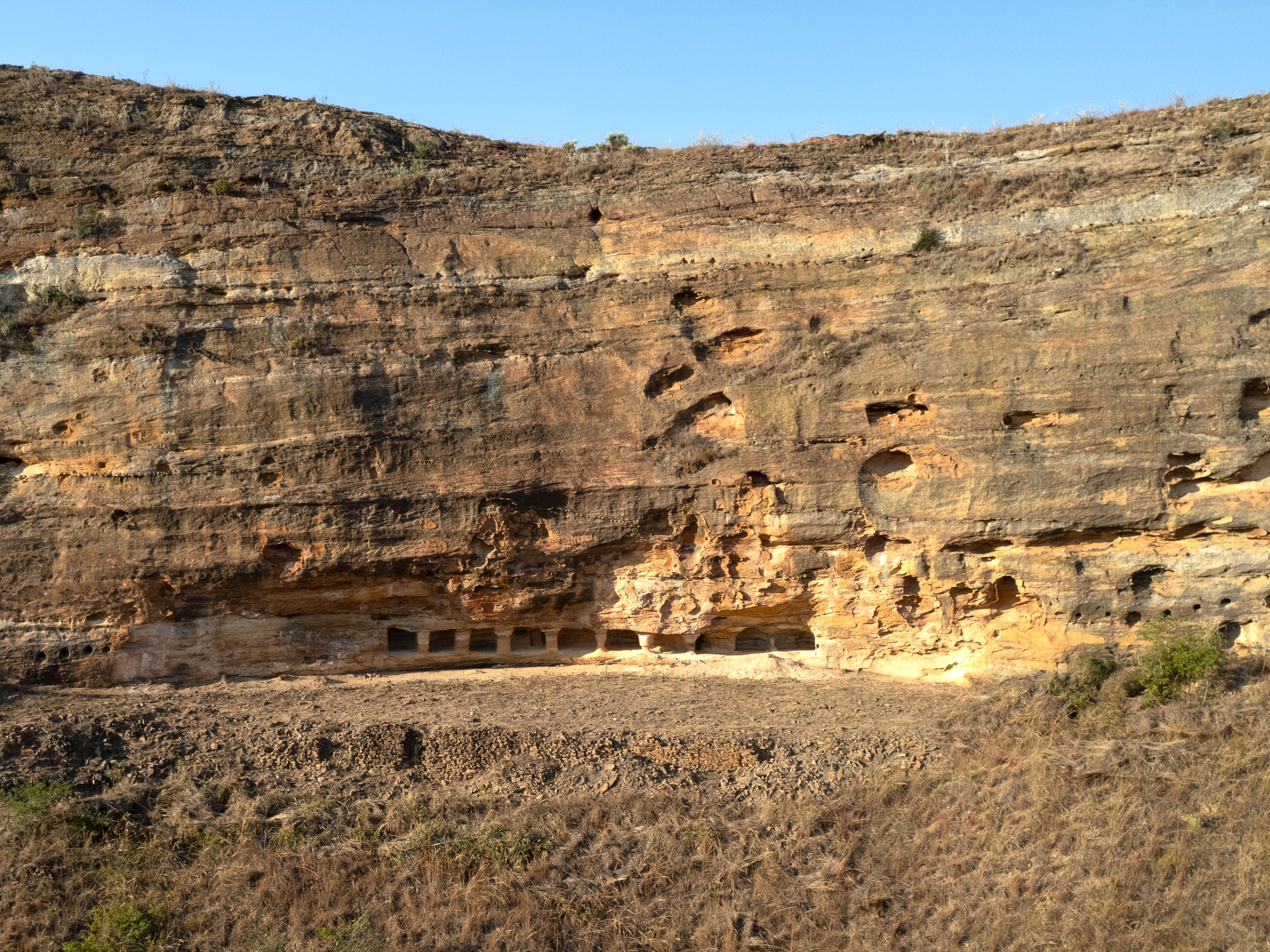
What Ancient African Huts Reveal About Earth's Magnetic Flips
Minerals in clays from the Iron Age may help scientists better understand how and why the magnetic poles swap places.
For the last 170 years, a mysteriously weak patch of Earth’s magnetic field has grown in size, causing some geologists to think that the planet is gearing up to flip its magnetic poles. Now, buildings that were ritually burned down in Africa more than a thousand years ago are adding vital new clues to the case.
Clay fragments baked in the fires contain minerals that preserve the orientation of Earth’s magnetic field during the Iron Age, pushing back our records of these changes and offering some much-needed data from the Southern Hemisphere.
The discovery, described recently in the journal Geophysical Research Letters, also offers support for a theory about what causes the poles to flip—linking the weird weak spot in the magnetic field with an oddly dense region some 1,800 miles underneath Africa, at the boundary between Earth’s mantle and its outer core. The work will help geologists better understand how and why Earth’s magnetic poles occasionally reverse, and perhaps even aid predictions for when they will next make a flip.
Locked in Position
Our planet has a solid inner core surrounded by a swirling outer core of molten iron. This churning region of hot rock creates a dynamo that generates our magnetic field, which acts as a protective bubble enveloping the entire Earth.
Among other benefits, this long-lived magnetic bubble deflects streams of charged particles constantly flowing from the sun, which would otherwise strip away our atmosphere and pummel the surface with damaging radiation. (The dynamic core is one of six big things that help make life possible on Earth.)
The dynamo is also what creates magnetic poles at each axis that roughly track with the geographic North and South Poles. But minerals in rocks that respond to magnetic cues show that—unlike the physical poles—the north and south magnetic poles have swapped places regularly over Earth’s 4.54 billion years of existence.
During the age of dinosaurs, Earth’s magnetic poles flipped about once every million years. More recently, pole reversals have happened once every 200,000 to 300,000 years or so. It’s been about 780,000 years since the last magnetic pole reversal, which suggests that one is geologically imminent.
Ever since the 1840s, scientists have also noticed that Earth’s magnetic field is getting weaker. The feeblest spot is an area straddling South America and southern Africa that researchers call the South Atlantic Anomaly.
To study the last few millennia—younger than ancient rocks, but older than direct scientific monitoring—scientists can measure magnetic orientations in certain archaeological artifacts. But this record is heavily biased toward the north. More than 90 percent of the data about the last 2,000 years of Earth’s magnetic field come from above the Equator.
To track the South Atlantic Anomaly, researchers are searching for more sites in the Southern Hemisphere. In 2015, scientists announced a fascinating new data source: burned huts in the Limpopo River Valley, an area that falls within modern-day Botswana, South Africa, and Zimbabwe.
About a thousand years ago, a group of Bantu-speaking people living in the valley ritually cleansed their villages during droughts by burning down huts and grain bins. These fires, which could reach temperatures hotter than 1,800 degrees Fahrenheit, wiped the villages’ slates clean—but inadvertently left geomagnetic records.
"When you burn clay at very high temperatures, you actually stabilize the magnetic minerals, and when they cool from these very high temperatures, they lock in a record of the Earth's magnetic field," study coauthor John Tarduno, a University of Rochester geophysicist, said in a statement.
Turbulent Core
Building on those results, the researchers have now found evidence that during the fifth and eighth centuries A.D., the region’s magnetic field was rapidly changing direction, much like it is today. These similarities, the researchers argue, mean that the South Atlantic Anomaly is just the latest version of a phenomenon that has long recurred in the area.
What’s more, the anomaly may have something to do with Earth’s shifting magnetic poles. The eastern half of the magnetic weak spot seems to correspond with a dense, steep-sided region of rock deep below Africa, at the core-mantle boundary.
Just as rocks in a stream can create eddies, this dense region—called the African Large Low Shear Velocity Province—may cause the outer core to circulate in unusual ways, expelling lines of the core’s magnetic field and diluting the planetary field above.
Since this region has been in place for more than a hundred million years, some scientists argue that it may have seeded past pole reversals. In rare circumstances, the expelled field lines may have created a regional magnetic field that was the opposite of Earth’s as a whole, triggering a planet-wide flip.
That said, the researchers caution that they still need more data and better models before they figure out precisely how and why Earth’s poles reverse.
"We now know this unusual behavior has occurred at least a couple of times before the past 160 years, and is part of a bigger long-term pattern," study coauthor Vincent Hare, a postdoctoral researcher at the University of Rochester, said in a statement. "However, it's simply too early to say for certain whether this behavior will lead to a full pole reversal."




